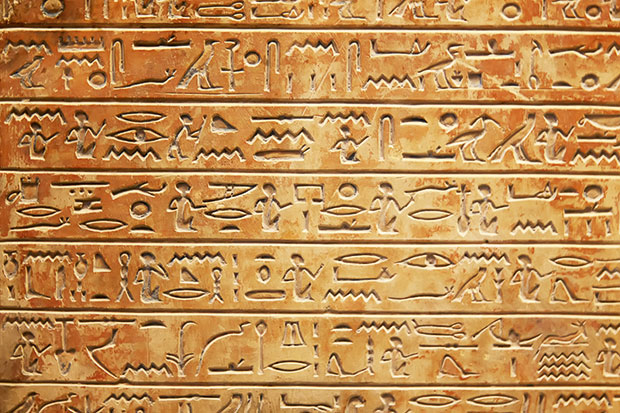Egypt’s revolution of 2011 didn’t just get rid of President Mubarak: it did a pretty good job of clearing out the tourists, too. The political uncertainty since then has made people wary of visiting — meaning more space and lower prices for those who do make the trip. But you’d better be quick if you want to take advantage: this seems to be the year that Egypt is opening up again. BA are resuming their Sharm el-Sheikh flights in September, while Abercrombie and Kent are back up to three boats for their Nile cruises (they had been down to one).
I started in Aswan, home to the alarmingly named Hotel Cataract. My guide, Alaa, explained that the word denotes a white water rapid on this stretch of the river: the medical sort sends the eye the same colour, hence the derivation. (Also from Language Corner: Egyptian camels are one-humped Dromedaries, as opposed to two-humped Bactrians — to remember the difference just picture the initial letters.) We visited the quarry whose stone built many of ancient Egypt’s monuments, with what would have been the world’s largest obelisk (42 metres) still in situ on its side, the crack that rendered it worthless painfully on show. At the Kom Ombo temple we found the secret tunnel which let a priest hide beneath a statue of a god and reply when it was addressed, tricking people into thinking that the god was responding to them. (Religious leaders conning their followers — the very thought.)
Further along the river at Luxor is the temple of Karnak, home to an awe-inspiring forest of hieroglyphic-clad columns towering 80 feet over your head. If you think they look familiar, it’s because it was here that James Bond and his toothy foe Jaws did battle in The Spy Who Loved Me. After much of the masonry collapses, 007 quips: ‘Egyptian builders.’ Roger Moore had to mouth the line silently then dub the sound on later, so as not to provoke the tourism official constantly on set ensuring that the film painted Egypt in only a positive light.
To really feel the benefit of the sparser crowds, head for the Valley of the Kings, where pharaohs’ tombs that before 2011 required lengthy queuing are now easily accessible. What’s more, once you’re inside King Tutankhamun’s tomb you don’t have to peer through a sea of sweaty armpits to make out the man himself. (Or rather boy: he died at 18, having reigned for nine years.) It’s astonishing as you look into his mummified face — the teeth unnervingly reminiscent of Ken Dodd — to think that this human is 3,000 years old. As was the honey found when Howard Carter opened the tomb in 1922: it’s the one food that never goes off, so was still edible. Sweet.
Abercrombie and Kent’s Nile cruises start at £1395pp for 7 nights. abercrombiekent.co.uk






Comments